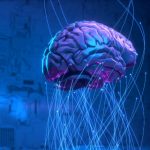The Nobel Committee has awarded the Nobel Prize in Physics to Professor John Clarke, Professor Michel H. Devoret, and Professor John M. Martinis for their pioneering research on quantum mechanics applications within electrical circuits. These scientists, based at institutions in the United States and France, conducted experiments in the 1980s that explored the intricate phenomena of superconducting circuits, an area that later became essential for the evolution of modern quantum technology. The announcement, made in Stockholm, acknowledges the foundational role their work has played in shaping everything from computing components to communication devices used every day. The recipients expressed both surprise at the honor and recognition of how their research continues to influence advances in digital technology. The technology stemming from their discoveries powers much of today’s digital and quantum devices.
In past news about significant breakthroughs in quantum mechanics, recognition has often come years after the initial discoveries were made. The Nobel Committee’s decision to select work from the mid-1980s illustrates ongoing developments in the field and the challenges of promptly awarding pioneering efforts in foundational science. Earlier discussions around Nobel considerations often focused on more recent advances, such as the surge in quantum computing activity over the last decade. Today’s acknowledgment bridges the gap by directly highlighting experimental origins that were, for some time, overshadowed by subsequent technological improvements. The prize underscores the tendency for world-changing innovations to be recognized well after their initial debut in scientific journals.
What Did the Laureates Demonstrate in Their Experiments?
The awarded research centered on experiments using superconducting electronic circuits known as Josephson junctions. By manipulating these circuits—separated by a thin non-conductive barrier—Clarke, Devoret, and Martinis revealed how macroscopic quantum mechanical tunneling and energy quantization could be observed at an electrical scale. Their studies allowed scientists to see, for the first time, charged particles acting collectively as one, filling the entire circuit in their setup.
How Did Their Work Impact Modern Technology?
Implications from these experiments extend far beyond academic interest. The findings have enabled new approaches in semiconductor technology, influencing transistor development in computer chips and advancing quantum computing, cryptography, and sensing. Because of these principles, contemporary devices—ranging from mobile phones to fiber optic cables—rely on applications of quantum mechanics, confirming its relevance across numerous fields.
“It is wonderful to be able to celebrate the way that century-old quantum mechanics continually offers new surprises. It is also enormously useful, as quantum mechanics is the foundation of all digital technology,” said Olle Eriksson, Chair of the Nobel Committee for Physics.
What Are the Reactions and Next Steps for the Laureates?
Professor Clarke expressed his astonishment at receiving the Nobel, noting the unanticipated nature of their work reaching such heights. The three laureates will split the 11 million Swedish kronor prize, marking not just a personal milestone but a highlight for wider quantum research communities.
“I’m completely stunned. At the time we did not realize in any way that this might be the basis for a Nobel prize. This is something that leads to development of the quantum computer. Many people are working on quantum computing, our discovery is in many ways the basis of this,” stated Professor Clarke.
Scientific recognition can often trail far behind the initial achievement, especially in fields as complex as quantum physics. As quantum research surges, foundational experiments, such as those honored here, provide the essential building blocks for the technologies that are now being harnessed for both industry and scientific exploration. Readers interested in electronics or quantum computing benefit from understanding how seemingly abstract physics research has been translated over decades into devices that are now part of daily life. As Nobel Prizes continue to reflect society’s scientific priorities, this award serves as a reminder of the ongoing intersection between groundbreaking research and practical technology applications. The recognition of superconducting circuit experiments underscores the long-term relevance of investing in fundamental research that may define future innovations.










